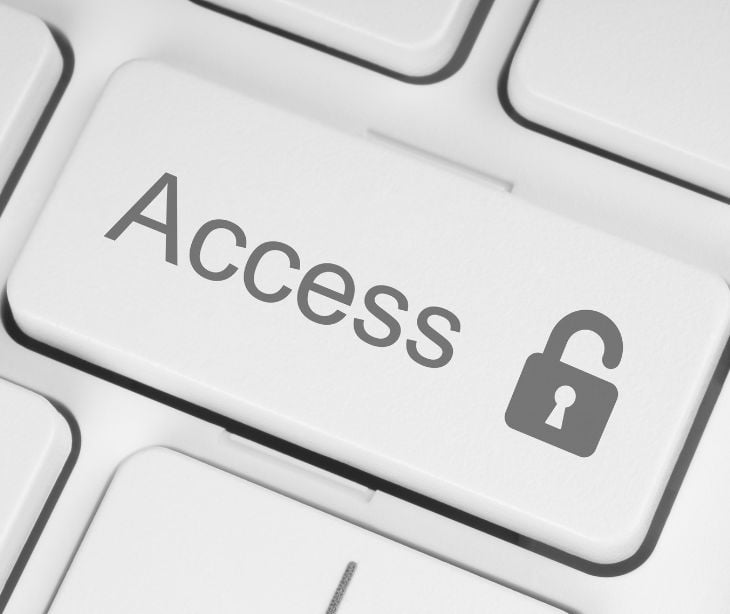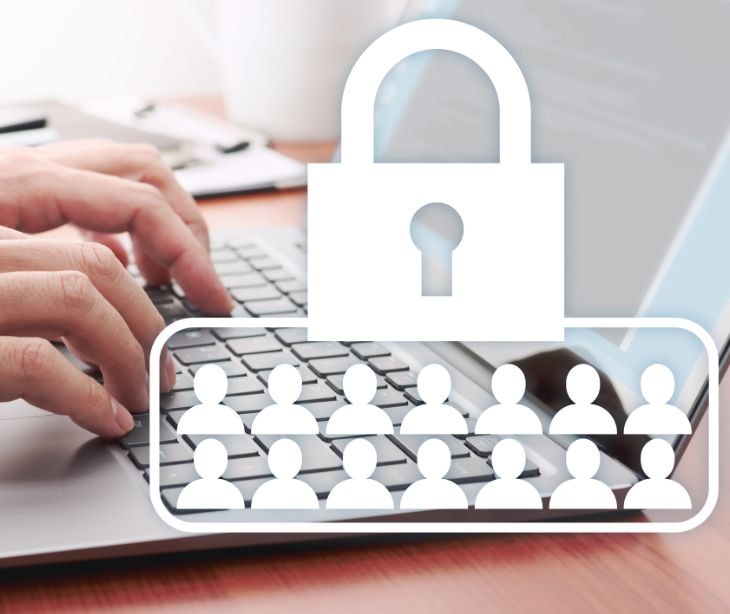
Role-based access control (RBAC) is a security approach that assigns user permissions based on their job roles within an organization. RBAC helps ensure that only authorized personnel can access protected health information (PHI), reducing the risk of data breaches or unauthorized disclosures. It supports HIPAA’s Privacy and Security Rules, which require safeguards to protect patient information and prevent unnecessary access by limiting access to the minimum necessary data for job functions.
Understanding role-based access control (RBAC)
Role-based access control (RBAC) revolves around roles, permissions, and access control. RBAC ensures that users have the necessary level of access required to perform their job duties by defining roles and assigning specific permissions and access rights to each role.
The fundamental principle of RBAC is the least privilege, which means granting users only the minimum access necessary to fulfill their responsibilities. This principle helps minimize the risk of unauthorized access to sensitive PHI.
Related: Healthcare and the principle of less privilege
Applying RBAC in a healthcare practice
Identifying roles
In a healthcare practice, for example, a dentist's office, various roles exist, each with distinct responsibilities. Dentists, dental assistants, hygienists, receptionists, and administrators are roles found in dental practices. Clearly identifying these roles forms the foundation of RBAC implementation.
Defining permissions and access rights
Define the specific permissions and access rights associated with each role. For example, dentists may require full access to patient records, including treatment plans and medical history, whereas receptionists may only need access to appointment scheduling and basic patient information. By carefully assigning permissions based on roles, unnecessary exposure of sensitive PHI can be minimized, reducing the risk of data breaches.
Role assignment and user management
After defining roles and permissions, the next step is to assign individual users to their respective roles within the healthcare organization. User management systems and identity management solutions facilitate the smooth assignment and tracking of user roles. These systems enable administrators to manage user accounts, assign and revoke roles, and ensure appropriate access rights are granted to the right individuals.
Regular updates and reviews help maintain an accurate user management system and ensure that roles are adjusted as responsibilities change or staff members join or leave the practice.
Implementing access control mechanisms
RBAC relies on various access control mechanisms to enforce its principles. User authentication is a component that requires users to authenticate their identity through usernames and passwords. Implementing strong password policies, such as requiring complex passwords and regular password changes, can bolster the effectiveness of RBAC. Additionally, using two-factor authentication (2FA) or biometric authentication, such as fingerprint or iris scanning, adds an extra layer of security, making it harder for unauthorized individuals to access electronic PHI.
Benefits of RBAC in healthcare organizations
According to a survey by Forrester Consulting, 63% of IT security and risk management professionals consider RBAC highly important for their organization's security.
- Least privilege principle: RBAC ensures that users are granted only the necessary level of access based on their roles, reducing the risk of unauthorized access to PHI. By restricting access to sensitive information, RBAC adheres to the principle of least privilege, minimizing potential vulnerabilities.
- Compliance with HIPAA regulations: Practices must comply with HIPAA to protect patient privacy and safeguard PHI. RBAC provides a structured approach to access control, which aligns with the security requirements outlined by HIPAA's security rule.
- Improved security: By ensuring that only authorized individuals can access patient records, RBAC reduces the risk of accidental or intentional breaches, protecting patient confidentiality and preventing data exposure.
- Efficient administration: Assigning roles and managing permissions based on job roles simplifies administration tasks, making it easier to onboard new staff members, manage access changes, and maintain an organized system for user accounts.
Additional security measures
- Encryption: Encrypting electronic PHI helps maintain data confidentiality, ensuring that the information remains unreadable and unusable even if unauthorized access occurs.
- Data backups: Regularly backing up electronic PHI safeguards against data loss in the event of system failures, disasters, or ransomware attacks.
- Staff training: Staff training sessions can cover password management, phishing awareness, and best practices for handling PHI.
- Audit trails: Implementing audit trails allows for the monitoring and tracking system activity, providing a detailed record of who accessed PHI and when. Audit trails aid in investigations and can help identify suspicious or unauthorized activity.
FAQs
Can RBAC help prevent internal threats in healthcare organizations?
RBAC minimizes internal threats by ensuring employees only have access to the data required for their job, limiting unnecessary access to sensitive PHI.
Does RBAC support remote access for healthcare workers?
Yes, RBAC can be applied to remote access, allowing healthcare workers to securely access PHI based on their role while ensuring compliance with security measures.
Subscribe to Paubox Weekly
Every Friday we'll bring you the most important news from Paubox. Our aim is to make you smarter, faster.




